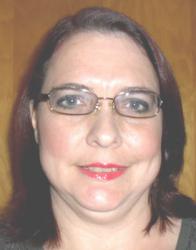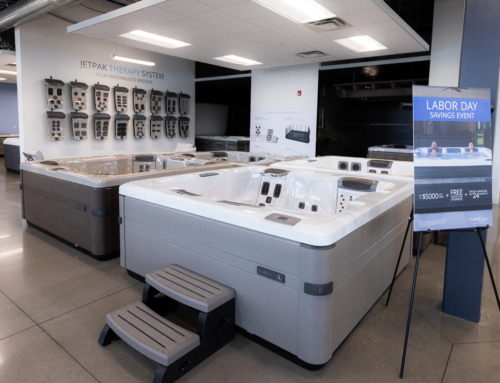In order to maintain a healthy body, people require a diet that includes a variety of foods. Different bodies have different needs, so the foods that produce a healthy body vary from individual to individual. The key to good health is the right diet for your unique body. Similarly, the key to a successful spa retail business is healthy sales. Just as health is influenced by different foods, successful salespeople are influenced by different motivators.
The Carrot vs. Stick Approach
In this scenario the “carrot” is a reward and the “stick” is a punishment. Simply put, this “either/or” strategy, or even a combination of the two, just isn’t effective. It isn’t effective because people are different. If the “carrot” being offered isn’t something all the salespeople see as a reward, then maybe only one or two people will strive to achieve it. Those same salespeople will become conditioned to expect a tangible reward for just doing their job. According to economist Anton Suvorov, “Rewards are addictive in that once offered, a contingent reward makes an agent expect it whenever a similar task is faced, which in turn compels that principle to use rewards over and over again.”
Likewise, motivation through fear, the “stick,” is equally problematic and can actually be harmful in several ways:
- Promotes negative mindsets
- Diminishes sales performance
- Produces hostile work environments
- Causes stress related health issues
The carrot vs. stick approach is an example of extrinsic motivation which is when a person is motivated by external forces. London Business School Professor Nigel Nicholson confirms that “all available evidence suggest that external incentives—be they pep talks, wads of cash, or even the threat of unpleasant consequences—have limited impact.”
According to HBR, happy employees are 31% more productive, generate 37% more sales, and are three times more creative than dissatisfied workers.
Neither the carrot nor the stick are effective because they are considered short-term motivators. Like fad diets, you may see an initial improvement, but it doesn’t last. Instead, what you need is a lifestyle change.
Motivation vs. Engagement
If you’re a member of a sales team, think about which of drivers give you the greatest sense of satisfaction: is it autonomy (directing your own ship), mastery (the desire to learn, grow, and improve), or purpose (serving something greater than yourself)? It’s time to ask yourself if what you really want is to be motivated salesperson or an engaged member of the sales staff. Or if you’re a manager, do you want motivated salespeople or an engaged sales staff. The difference seems subtle at first, but it becomes obvious with business coach Jeffrey Tobin’s definitions:
Motivation = what’s in it for me
Engagement = what’s in it for us
Most people have two objectives when it comes to their motivational state: what they want to achieve and what they want to avoid. Success and respect are high on the list of what most employees want to achieve in the workplace (it turns out, money is less of a motivator than you might have thought). The difference is that motivated salespeople want these things for themselves; whereas, engaged salespeople work together to help each other and the business reach these goals. So, how do managers encourage an environment of engagement? It’s easier than you think.
R.E.S.P.E.C.T.
“…Find out what it means to me.” What it means to clinical psychologist Paul Marciano is outlined in his book “Carrots and Sticks Don’t Work.” It is, in fact, a model for driving sales staff engagement:
- Recognition: Give positive feedback for a job well done
- Empowerment: Provide resources, training, and autonomy
- Supportive Feedback: Be specific, timely, and supportive with corrective feedback
- Partnering: Share organizational goals with salespeople/treat them like partners
- Expectations: Make them clear and understandable
- Consideration: Get to know your staff and treat them as valuable assets.
- Trust: Avoid micromanaging, keep your word, admit mistakes, give credit where due
Basically, be a coach and a mentor as well as a manager. When you’re committed to the success of your sales team, they will be committed to performing their best. Touch base often and give both positive and negative feedback. Marciano suggests an 80/20 ratio of positive to negative assessment to foster an environment of encouragement rather than criticism. Instead of reaching for the stick, have an honest conversation with poor performers. Work together to isolate the problem, identify its cause and agree on a solution.
Forbes offers these three tips for increasing sales team engagement:
- Focus on Impact: Instead of talking about financial results, focus on the impact of their efforts on the company, the customer, and society. Spa dealers can emphasize community roles, green initiatives, energy efficiency, and so on.
- Emphasize “We”: What can we do better? How can we help? What are our goals? How can we achieve those goals?
- Aim to Inspire: Leaders who inspire have more satisfied, committed, and productive employees.
Yes. Salespeople need to be inspired. And some of the best inspiration can be outsourced. That’s right. Use your customers to rally the troops. “Outsourcing inspiration to end users can…keep the content fresh: Leaders can call on multiple customers to deliver distinct messages.” How does this apply to inspiring spa salespeople? Consider all the potential benefits of spa ownership and usage then invite customers to come in and share positive experiences:
- Reduced chronic pain from arthritis and other disorders
- Lower blood pressure from decreased stress and anxiety
- Closer family relationships from hanging out in the spa together
- Increased socialization with friends
“A growing body of research shows that end users—customers, clients, patients, and others who benefit from a company’s products and services—are surprisingly effective in motivating people to work harder, smarter, and more productively.” Hearing about how a spa they sold had a positive impact on a customer can be a great inspiration to your sales staff.
“A growing body of research shows that end users are surprisingly effective in motivating people to work harder, smarter, and more productively.”
Improving Sales Team Engagement
According to Harvard Business Review, happy employees are 31% more productive, generate 37% more sales, and are three times more creative than dissatisfied workers. To keep your salespeople engaged, try these actionable methods:
- Let them choose what kind of training they complete and what job-related skills they want to improve.
- Conduct employee feedback surveys
- Find out what sales staff want/need to remain engaged (new POS terminals, updated or upgraded software, more training opportunities, etc.) then take action on survey results to get them what they require to stay engaged.
- Allow salespeople more autonomy
- Within reason, let them work shifts they feel most comfortable and most productive during (not everyone is a morning person or evening person).
- If they need a day to recharge, give it to them.
- Foster workplace friendships and a team mentality
- After-work happy hours
- Company BBQs
- Charitable activities like a store team for Relay for Life and similar events
- Recognize accomplishments
- Meeting shout-outs
- Finding them in the store and personally congratulating them on or thanking them for their efforts
- Handing out small gift cards to show appreciation
- Treating them to a one-on-one lunch to show them they are valued members of the team
From the salesperson perspective, while you might not be driving the machine, you still play a key part in helping it run. This means that directing organizational culture is not just up to managers—the willingness of the sales staff to participate and promote engagement influences it as well.
Bonuses and other tangible incentives can be great motivators, but fostering lasting engagement should be a top priority. Instead of carrots and/or sticks, see yourself as one of many “carrot sticks” that work together. Through teamwork and mutual support, your spa business can consistently achieve healthy sales goals.









Leave A Comment